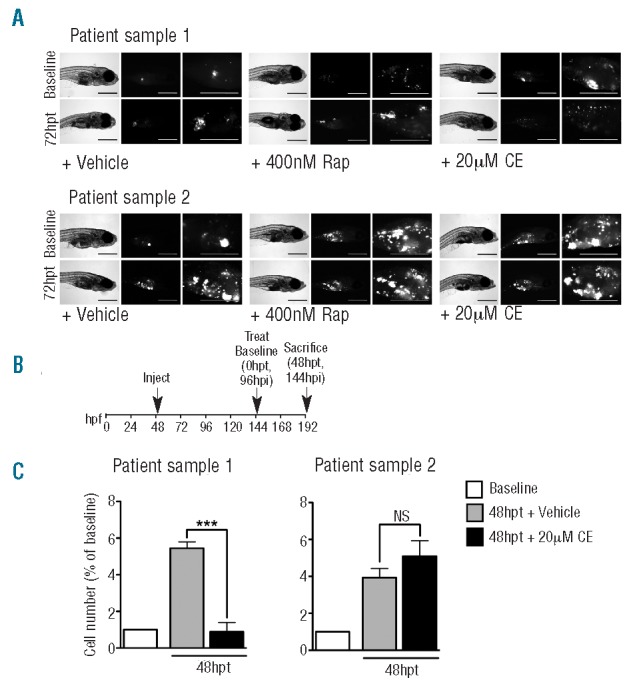Figure 2.

T-cell acute lymphoblastic leukemia patient Sample 1 responds in vivo to Notch inhibition with compound E, but not to mTOR inhibition with rapamycin. (A) Representative brightfield and fluorescent and magnified fluorescent images (from left to right) of zebrafish embryos transplanted with patient Samples 1 and 2 at 0 hpt (baseline) and 72 hpt with or without drug. Each embryo was xenotransplanted with approximately 500 cells. (B) Schematic of in vivo zebrafish XT cell proliferation assay. (C) Quantification of patient sample engraftment fold change with or without compound E treatment. Patient Sample 1 and 2 engrafted and proliferated in the zebrafish XT model (indicated by the significant increase in number of leukemia cells from baseline to 48 hpt with vehicle). Patient Sample 1 responded significantly to compound E treatment. Engraftment fold change was determined by sacrificing embryos at 0 hpt and 48 hpt and performing cytospins with dissociated embryos and immunohistochemistry for PML bodies (only present in human cells, not in zebrafish cells). Means+SEM; N: 1; P*<0.05, P**<0.01, P***<0.001 for significant decrease in number of cells determined using unpaired 2-tailed Student’s t-test. Groups of 15–20 embryos were used for each time point and drug treatment. Scale bars are 500 μM.
